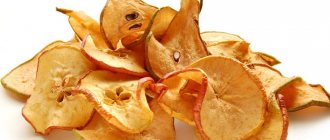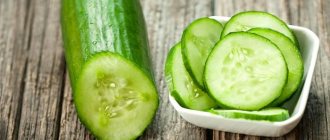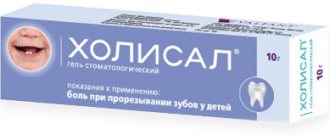Dairy products are very healthy and necessary for a child. In this material you will learn about kefir and yogurt for your child.
Yogurt is the result of milk fermentation with the help of special bacteria characteristic only of this product - thermophilic streptococci and Bulgarian bacilli. It contains proteins that are necessary and well absorbed by the baby’s body, and provides a large amount of calcium, which strengthens growing bones and teeth. Vitamins and microelements, probiotics – yogurts “supply” all this to the body.
Of the cautions, it should be noted the need to carefully observe the terms and conditions of storage, as well as the appropriate choice of age category.
What are the benefits of yogurt?
- This dairy product is a source of protein that the child’s body easily digests;
- yogurt contains a lot of calcium, which is important for the formation of the skeletal system and strengthening teeth;
- this lactic acid product contains many vitamins A, B, and it also contains phosphorus, calcium, and chlorine.
- yogurt contains a large amount of microelements and beneficial vitamins, which are so important for the full development and growth of the child;
- This product contains probiotics, which have a positive effect on the immune system and digestive system.
- after taking antibiotics, it is useful to introduce yogurt into your daily diet, as it perfectly restores the intestinal microflora;
- if you eat yogurt every day, the body produces interferon, and this helps to increase the protective functions of the immune system;
- Yogurts made for children are either liquid, which you can drink, or thick; pectin is added to these products, this allows you to make your baby’s complementary foods more varied and healthy.
The benefits of yogurt for baby food
Baby yogurt, saturated with lactobacilli, saturates the newborn’s body with a huge amount of vitamins and calcium, which is important for skeletal elements and tooth enamel. The composition of fermented milk dessert is dominated by easily digestible proteins, which ensure the growth and development of the baby.
The benefit of yogurt for a child’s body is that it contains a very large amount of probiotics. With the help of such additives, intestinal microflora is normalized and digestion is improved. It is especially useful for children after prolonged antibacterial therapy.
Yogurt for baby food can be with various additives - fruits, berries. This will make your child's daily diet more nutritious and varied.
Watch the video with Dr. Komarovsky’s opinion about yogurt:
What are the benefits of yoghurt for children? — Dr. Komarovsky
When can yogurt be dangerous?
It is worth knowing that this lactic acid product itself cannot harm the child, but since it is a perishable product, there is a great danger that you can feed your baby spoiled or expired yogurt. Therefore, before giving it to your child as food, you should always carefully check the date of manufacture of this product and its expiration date.
It is important to know!
It is also worth paying attention to the fact that in our stores there is now a very large number of a wide variety of fermented milk products. In this abundance, it is easy to get confused and accidentally make the wrong choice by buying yogurt, which is absolutely not intended for consumption by children. Be extremely careful not to make mistakes that could have a detrimental effect on your child’s health.
Are children allergic to yogurt?
Please note that your child can be allergic to yogurt only in two cases:
- if the fermented milk product contains fruits and berries that the baby cannot tolerate;
- if your baby is allergic to cow's milk, or rather to cow's milk protein.
It is important to know that in these cases, giving yogurt to a child is strictly contraindicated!
Yogurt from the store - benefits and harms
Undoubtedly, homemade yogurt is healthier for a baby of any age, and for adults this fermented milk product is preferable, but moms don’t always have time to prepare it, and bright jars of the sweet delicacy are so advertised that some feel their beneficial effects even at the time of purchase. However, not everything is so simple, and in order for yogurt to truly have the qualities declared by the manufacturer, its shelf life should not exceed 7 days, or even better, 3 days , so you will definitely be sure that preservatives are not hidden behind the beautiful packaging and promoted brand. dyes.
Whether children can have this kind of yogurt is up to the parents to decide, but even if you decide to trust a manufacturer whose conscience is clear, do not forget that suppliers can also be unscrupulous, delaying the production date, as well as sellers who do not comply with storage standards for perishable products. There are often cases when a child, after drinking expired yogurt, ends up in an infectious diseases hospital with serious poisoning, since during the storage or manufacturing process standards were violated and harmful and even dangerous bacteria were added to the beneficial bacteria. Therefore, even if everything is fine with the timing, you need to check the yogurt for taste, consistency and smell.
If your child has eaten expired yogurt, you should act quickly. If the child is under one year old, you need to call an ambulance, but if the child is older, you can try giving him a rinse, and then give him activated charcoal at the rate of 1 g (4 tablets) per 10 kg of the baby’s weight.
At what age are children introduced to complementary foods with yogurt?
At what age can children be given yogurt?
Pediatricians give the following answer: for babies who are artificially fed, yogurt can be given from 8 months, and for babies who are breastfed, this product should be introduced into complementary foods from 9 months.
How to properly introduce it into a child’s diet
Your baby's first introduction to yogurt would be best done during morning breakfast; offer him just one spoon of the new dairy product.
This must be done so that you have the opportunity to assess your child’s condition during the day. whether he had an allergic reaction to yogurt.
If there is no allergy, then in the future the lactic acid product can be given to the baby during the afternoon snack, along with fruit complementary foods. This is usually the fourth feeding of the day. Yogurt also goes well with cottage cheese and cookies.
Yogurt with live bacteria that is not marked “for children” is allowed to be given to a child only after 2 years.
For young children, what is the recommended serving of yogurt?
The daily amount of yogurt in a baby’s diet should not exceed half the norm of all fermented milk complementary foods that the child receives.
80-100 ml of yogurt is given to children under 1 year old, and for children from 1 to 3 years old the portion is increased to 200 ml.
Positive effects of yogurt on children's bodies
- Due to the fact that yogurt is produced by fermentation, the composition is saturated with beneficial bacteria. When entering the body, dairy products regulate the balance between pathogenic and beneficial microorganisms in favor of the latter. The product is largely aimed at normalizing digestive processes. A child will not experience constipation if he regularly eats yogurt in moderation.
- Against the background of suppression of pathogenic microorganisms, the number of valuable bacteria increases, which leads to strengthened immunity of the younger generation. Pediatricians advise parents to treat their child with this product during the period of ARVI, influenza, and also in the off-season, when the immune system is greatly weakened.
- Products made from high-quality raw materials using technology contain a huge amount of probiotics. They are responsible for high-quality bowel emptying, enhancing intestinal peristalsis, as well as preventing dysbacteriosis.
- Children prone to developing gastrointestinal diseases should eat yogurt to prevent gastritis and peptic ulcers. Thanks to the inclusion of lactic acid, acidity levels are normalized, which makes it possible to prevent damage to the mucous membranes. Yogurt forms a valuable environment for the stomach.
- It is worth mentioning the content of calcium and protein compounds in a decent amount. Dairy products must be eaten to prevent rickets, strengthen bone tissue and the entire musculoskeletal system in particular. Each child has its own norm of these substances, which must enter the body daily. If you treat your child with homemade yogurt, the product will cover more than a quarter of the calcium requirement.
- A fragile body is subjected to enormous external stress, as a result of which it needs to be strengthened in all possible ways. Yogurt is a chemically beneficial product rich in B vitamins, vitamin D, retinol, tocopherol, vitamin K and other substances. They must be supplied with food to ensure the correct development of the central nervous system.
- Fermented milk products, obtained by fermenting milk with the addition of bacteria, cope with severe diarrhea. The composition also helps eliminate the symptoms of dysentery, which is undoubtedly valuable for the younger generation. Yogurt should be included in the menu for children aged 1 to 2 years to quickly restore electrolyte balance after diarrhea.
- The product eliminates difficulties with the digestibility of lactose. Intolerance to this compound leads to the fact that the baby cannot eat regular milk. This feature is characteristic of an organism that cannot break down lactose due to an insufficient amount of enzymes. Due to intolerance, flatulence, diarrhea, burning sensation, and vomiting develop. Some pediatricians believe that yogurt can replace milk, since lactose is represented by simple compounds.
How to make homemade yogurt
Making yogurt at home is not at all difficult, as it might seem at first glance. To prepare a natural fermented milk product at home we will need:
- special leaven. It is worth noting that you can purchase yogurt starter at any pharmacy;
- we will also need fresh boiled milk;
- utensils for cooking. It is advisable to sterilize the dishes.
Making yogurt in a yogurt maker
This is one of the easiest ways to prepare this natural and delicious lactic acid product.
- Cool the boiled milk to a temperature of 38-40 degrees and add the starter to the milk. Please note that if the temperature is more than 40 degrees, in this case the bacteria will not be able to multiply and therefore the yogurt simply will not work.
- After adding the starter to the milk, mix everything well and pour the milk into sterile containers. Then we put the jars of fermented milk in the yogurt maker.
- And now the yogurt maker will get to work. After all, it constantly maintains the required temperature at which bacteria actively multiply.
The main advantage of a yogurt maker is that it can maintain the required temperature for a long time, which is necessary for the starter microorganisms to work.
In a Yogurt maker, the process of preparing the product takes about 8-10 hours. Agree, this is very convenient, because you can leave the fermented milk overnight, and in the morning you will have fresh yogurt waiting for you to eat. It can be stored in the refrigerator for no more than 4-5 days.
It is best to give homemade yogurt to your child in the first 2 days after preparing it. The longer this lactic acid product is stored, the less beneficial bacteria remains in it.
Homemade yogurt in a slow cooker
You can prepare yogurt in a regular slow cooker if it has a keep warm function.
- Boil 2 liters of milk, then cool it to the required temperature of 38-40 degrees.
- Add the starter to the prepared milk, mix well and pour the milk into the multicooker.
- We set the yogurt mode in the multicooker to the desired mode. The preparation time for fermented milk product is 8-10 hours.
When the yogurt is ready, pour it into glass jars and put it in the refrigerator for storage. You can eat it 2-3 hours after cooking.
How to make homemade yogurt in a thermos
If you don’t have a yogurt maker or a multicooker, then we will use a regular thermos to prepare yogurt.
- Boil the milk and cool it slightly to 40 degrees, then add the starter and mix well.
- To clean the thermos from pathogenic bacteria, give it boiling water, and then pour the prepared milk into it.
- Let's close the thermos, wrap it in a towel and put it in a warm place, in a sunny place in summer, and closer to the radiator in winter.
- After 5-7 hours, fresh yogurt in a thermos will be ready. Now we pour the lactic acid product into sterile jars or cups.
- After this, we store the prepared yogurt in the refrigerator. A cold environment prevents further fermentation of milk because the growth of bacteria stops in it.
You can add pieces of your favorite fruit, a little syrup or jam to the prepared yogurt according to your wishes and taste.
Myths about yogurt
- It is believed that the dessert in question is a valuable source of substances that are important for a growing body. In reality this is not the case. Yogurt contains vitamins in small quantities, which only partially affect the development of the baby. To meet the daily need for nutrients, the child will have to consume liters of treats every day.
- Many modern mothers are deeply mistaken when they think that live yogurt has a long shelf life. No technology can preserve the full usefulness of such a product for a long time. The completely natural composition can be consumed within 5-7 days. It is important to observe all the details of storage. After a few days, all living bacteria in the product die. Yogurts that have a long shelf life contain preservatives, so it is difficult to call them natural.
- It is worth noting that the delicacy does not contain a large amount of calcium, like other dairy products. Although, many people think completely differently. It all depends on the quality of the milk, that is, what the cow previously ate. The animal should be given additional vitamin complexes so that the future treat contains calcium.
- There is an opinion that yogurt will bring great benefits to the kidneys. However, if there are stones or sand, it is better to avoid consuming the product. The rest of the milk actually has the ability to cleanse tissues of slagging and toxic compounds. If a child has problems such as kidney failure, then yogurt is contraindicated for him.
- It is a mistake to believe that the product in question is strictly prohibited from being consumed if urates are detected. If you look at it, everything is just different. All fermented milk products, in particular yogurt, are considered an excellent remedy that removes urates from the body.
If you want to introduce your baby to yogurt, learn all the intricacies before doing so. Consider the child's age. Not all treats have a positive effect on the health of the body. Store-bought products lose all their beneficial substances after pasteurization. Therefore, the benefit of the composition is reduced to almost zero. If you want the product to have a positive effect on your child’s development, prepare the treat yourself. Do not rush to add fruits or berries to the yogurt after cooking. Due to such additives, your child may develop an allergic reaction.
Homemade yogurt recipes for children under one year old
It’s good if your baby likes the taste of milk yogurt without various additives. However, some children enjoy eating fermented milk products only if they add some fruit or tasty additives.
What natural ingredients are suitable as an additive to homemade yogurt for baby food?
- peach or peach puree;
- applesauce or apple;
- pear;
- pumpkin;
- cottage cheese;
- bananas;
- cookie.
Note!
When you add various fresh fruits to yogurt, you need to eat it right away, but jarred puree from the store can be added in advance.
Fruit salads with yogurt
Yogurt is an excellent dressing for various fruit salads. It is better to give kids salads made from seasonal fruits, so we will divide these salads into those prepared in summer and winter.
This delicacy can be offered to children over 1 year old. Now we will take a closer look at the recipes for some fruit salads with yogurt.
To make your fruit salad delicious, add fresh seasonal fruits to your taste and remove those that you don’t have on hand from the list.
Preparing a summer salad
Ingredients:
- one pear;
- one small apple;
- plums - 3 pieces;
- grapes - a small handful;
- melon - 1 slice;
Preparation:
- Wash the fruits well and remove the skin and seeds.
- Cut the fruit pulp into small cubes and season the salad with natural yogurt.
- If necessary, sweeten the dish by adding a small amount of honey.
Winter fruit salad
Ingredients for cooking:
- mandarin;
- persimmon;
- kiwi;
- apple;
- banana.
Preparing the salad:
- Remove the skin and seeds from the fruit, and then cut the pulp into small cubes.
- We lay out the fruits in layers, filling each layer with yogurt.
- If desired, you can sprinkle each layer with a little sugar.
Note!
It is best to give your child such a salad as soon as you prepare it, so that the fruits included in the dish do not lose their beneficial properties.
To interest your child and improve his appetite, you can try to design a new dish for him in the form of some funny animal, house or car.
Yogurt recipes for babies
Yogurt can be a tasty and nutritious snack in children's diets. It can be served with cottage cheese, soft shortbread cookies, pieces of apples, pears, bananas, peach and other fruits.
Yogurt can also be used as an ingredient in the preparation of various salads, sweet casseroles and other dishes that children are sure to enjoy.
Summer vitamin salad
- pears – 2 pcs;
- apples – 2 pcs;
- plums or peaches – 5 pcs;
- melon slices – 2 pcs;
- grape berries – 15-20 pcs.
Wash all fruits thoroughly, peel and cut into small slices. Add seedless grapes and pour fermented milk product over all ingredients. If the salad turns out to be very sour, you can add a little honey to improve the taste (if the child is not allergic to bee products).
Winter vitamin salad
- apples – 2 pcs;
- kiwi – 2 pcs;
- persimmon – 2 pcs;
- bananas – 2 pcs;
- tangerines or oranges – 2 pcs.
Peel the fruits, remove seeds and cut into small pieces. Place in a salad bowl in layers, pouring over yogurt. If desired, you can add a little sugar or honey.
Read on the topic At what age can you give oatmeal to a child: how to cook it with milk and water
Yogurt is a tasty and healthy treat that should definitely be in a child’s diet already in the first year of life. When administered correctly, taking into account age restrictions, a fermented milk product helps to diversify the daily menu, as well as strengthen the child’s health.
Read on the topic At what age can you give sour cream to a child: is it possible for children, what is the benefit and harm
Share link:
Did you like the article?
Average rating 0 / 5. Total votes: 0
- about the author
- Recent publications
Elena Volodina
Author of the article
Elena Volodina recently published (view all)
- Children's hematogen: at what age can it be given to a child, benefits and composition - 12/24/2020
- At what age can you give persimmon to a child: benefits, why not - 11/22/2020
- At what age can you give grapes to a child: with and without seeds - 11/13/2020
What healthy additives can be added to yogurt?
Nuts. They are rich in fats, vitamins and microelements, which are useful and so necessary for the growing child’s body. Nuts help make yogurt richer and tastier. Walnuts, hazelnuts, almonds, cashews will be a tasty and healthy addition.
Dried fruits. Dried apricots and raisins are very useful in themselves. And if you add them to yogurt, it will only increase its beneficial properties and also acquire a pleasant sweetish note. In addition, kids are always interested in catching dried fruits from a jar of yogurt, and a regular breakfast turns into a kind of game.
Muesli. They will make the yogurt more filling and change its taste to a richer one. In a lactic acid product, the flakes become melting and soft, which children really like.
Vanilla. She has a wonderful aroma that will delight many. If you add just a little vanilla to ready-made yogurt, it will be very appetizing and incredibly aromatic. The most important thing is not to overdo it with vanilla, otherwise the dairy product may be slightly disappointing.
Where to begin?
To make homemade yogurt we need: milk, starter culture and a yogurt maker (or thermos). Where can you buy starter for homemade yoghurt, and what does it look like? This is the first question that a person asks when he learns about the existence of homemade yoghurt. It looks like a powder and is packaged in jars or special paper bags at the rate of one jar (bag) per 1 liter of milk.
Purchasing starters:
1. In some models of yogurt makers, starters are included.
2. All instructions for yogurt makers indicate where you can purchase starters, and also indicate your email address.
3. Sourdough starters can be purchased at city dairies.
4. In a network of pharmacies that cooperate with sourdough manufacturers. Usually there is a poster on the shop window or on the door saying that you can buy starters for homemade yoghurt in this place.
5. You can order from the official website of sourdough manufacturers and choose a delivery method - by mail or directly to your hands by postal courier.
6. Currently, starter cultures are already on sale in supermarkets and children's stores.
There are several types of starter cultures.
This depends on the content of lacto- and bifidobacteria in them. For example, there is bifivit (especially for introducing complementary foods, has a sweetish taste), vitalact, narine, bifidocomplex, acidophylact (for people undergoing a course of antibiotics or chemotherapy) and many others. What bacteria the starter consists of and for whom it is best suited, what properties it has, can be found on the manufacturer’s official website and in advertising brochures in pharmacies.
What kind of starter can I use?
If you want to prepare healthy yogurt for your baby, then you should not use ready-made yogurt from the store as a starter. Various fillers and microflora of a store-bought product can give a very unpredictable result during the preparation process.
This is important to know!
You only need to buy a special starter that contains all the bacteria necessary for making yogurt. It is best to purchase sourdough starter at a pharmacy or specialty store.
Pay attention to the expiration date of the starter and the date of its manufacture. Make sure it has been stored in the refrigerator.
If you are preparing yogurt for a child under one year old, then you should always use only new starter.
There are different starter cultures, and other fermented milk products are prepared from them - these are vitalact, bifivit, and streptosan. These products contain completely different bacteria. Sometimes it is advisable to pamper your baby with fermented milk products made from these starters so that there is variety in the child’s diet.
Kefir or yogurt for a child: what is better to give to a baby under one year old?
Today, doctors recommend introducing kefir into the diet of a child up to one year old , namely at 8-9 months, and after the baby has “mastered” porridge and purees (fruit, meat, vegetable).
- Kefir contains large amounts of casein, which can cause allergies or diarrhea. Like any new product, kefir should be given gradually, starting with 20-30 ml.
- The maximum daily volume is no more than one glass. You should not give your baby any other kefir except the special one for children.
- The baby can consume natural yoghurts prepared at home either on their own or as a mixture with fruit or berry purees. You can start complementary feeding with yogurt, as well as kefir, from 8-9 months, not exceeding 100 g per day.
- Both kefir and are healthy for a child under one year old The difference lies in their effect on small organisms.
- Kefir grains contain a large number of beneficial bacteria and yeast, and they are produced by fermentation. There are only two types of bacteria in yogurt starter, and fermentation occurs without the participation of yeast.
Kefir is also useful.
The use of kefir, in particular, helps get rid of harmful microorganisms and, in addition, helps restore the intestinal microflora.
Yogurt also has the ability to cleanse the gastrointestinal tract and normalize its functioning. Therefore, it is impossible to give unconditional preference to any of these products. Both of them are healthy, and both are worth eating, including for babies under one year old.
Choosing good yogurt for your child in the store
First you need to look at the label - the fermented milk product should be labeled with the word “yogurt”.
Note!
Carefully read the composition of the product; yogurt intended for a child should be made only from milk and starter culture. If you find preservatives, flavorings and various thickeners in its composition, then immediately refuse to purchase.
You can buy yoghurts that contain pieces of fruit, but remember that they must be given with caution. Well, such products may cause an allergic reaction in a child. It would be better to add a little fruit puree to regular yogurt without additives, which you have already given to your child and to which the baby is not allergic.
For a very young child, in the first year of his life, it would be best to choose classic yogurt or semi-fat milk yogurt with a fat content of up to 3.2 g.
For a child aged 2 to 5 years, milk-cream, cream-milk and classic yogurts are good.
Low-fat yoghurts are yoghurts that have reduced fat content; they are products that should not be chosen for children. These products are used only as directed by a physician.
Be sure to check the shelf life and expiration dates. This value is valid within 5 to 7 days. Remember that yoghurts that are stored much longer contain preservatives. It is not recommended to buy a product that can be stored without refrigeration.
Yoghurts, which are produced by many well-known manufacturers today, such as Rastishka, Immunele, Erman, Miracle and others, are not products intended for baby food. They have a fairly long shelf life, and they contain various flavorings and dyes that are identical to natural ones. These yoghurts are allowed to be given to children from the age of three, all this is indicated on the product packaging.
If yoghurts are positioned as natural bioproducts, then the labels must indicate data on the concentration of microorganisms. Usually, by the end of shelf life, the content of microorganisms in them should be at least 107 CFU.
Agusha
Under the Agusha brand, two types of yogurt are produced for babies under 1 year of age:
- viscous ones that need to be eaten with a spoon;
- drinkable, which can be drunk from a bottle or cup.
These yoghurts are recommended to introduce complementary foods to babies from 8 months. The Agusha brand is distinguished by a fairly wide range and selection of children's yoghurts.
The shelf life of this brand is 14 days.
Subject
Bioyogurts of the Tema brand are recommended for baby food from 8 months.
Yoghurts are of this brand only for drinking. Their composition: whole milk, skimmed and powdered milk, juice, fruit puree, sugar, thickener - corn starch, a. Carrot juice is also a natural coloring agent; concentrated lemon juice acts as an acidity regulator.
Bioyogurt "Tema" contains: 2.8% fat, 3.2% protein, sugar 5.8%, calorie content 84 kcal.
Possible harm and contraindications
To decide at how many months you can start giving your baby yogurt, you need to remember that such complementary foods can cause allergic reactions. Most often, they are caused by fruit and berry fillers, the addition of synthetic flavors, dyes and preservatives. An allergy to a product without additives is possible only with individual lactose intolerance.
When giving yogurt to children, parents should remember that the shelf life of products for children is very short, so there is a very high probability of treating your baby to an expired treat. The cause of negative reactions may be not only the shelf life, but also the conditions in which it was kept. That is why many pediatricians recommend making delicious and nutritious homemade yogurt for babies.











